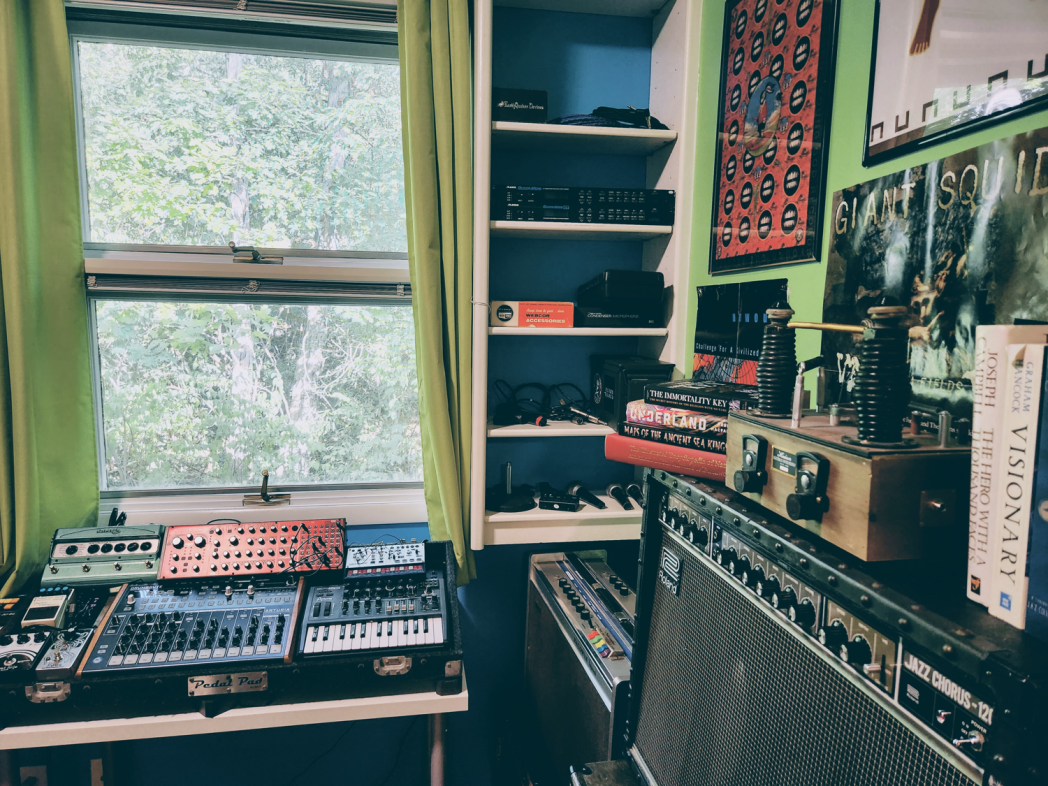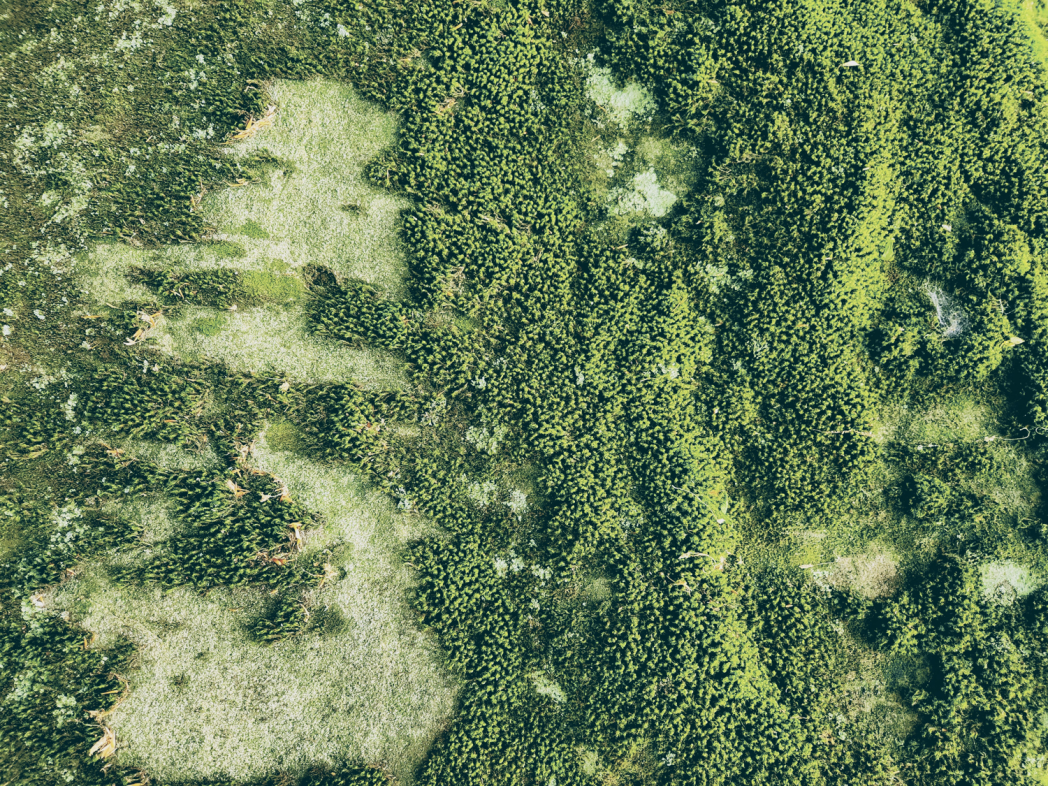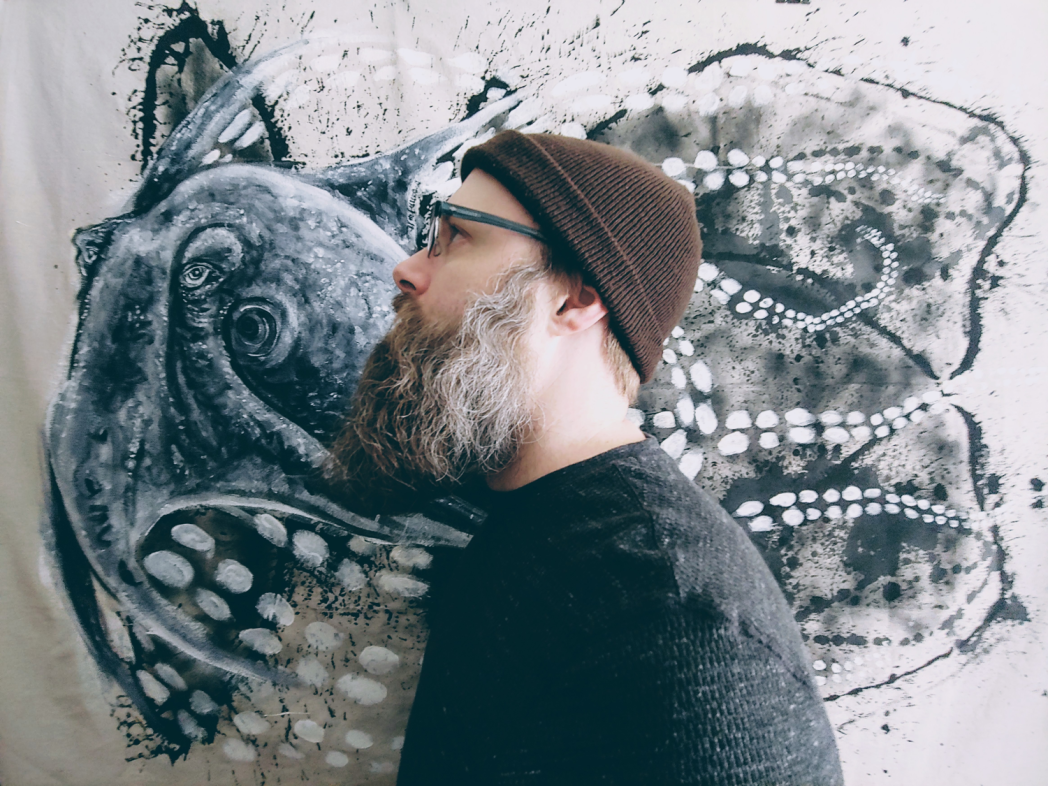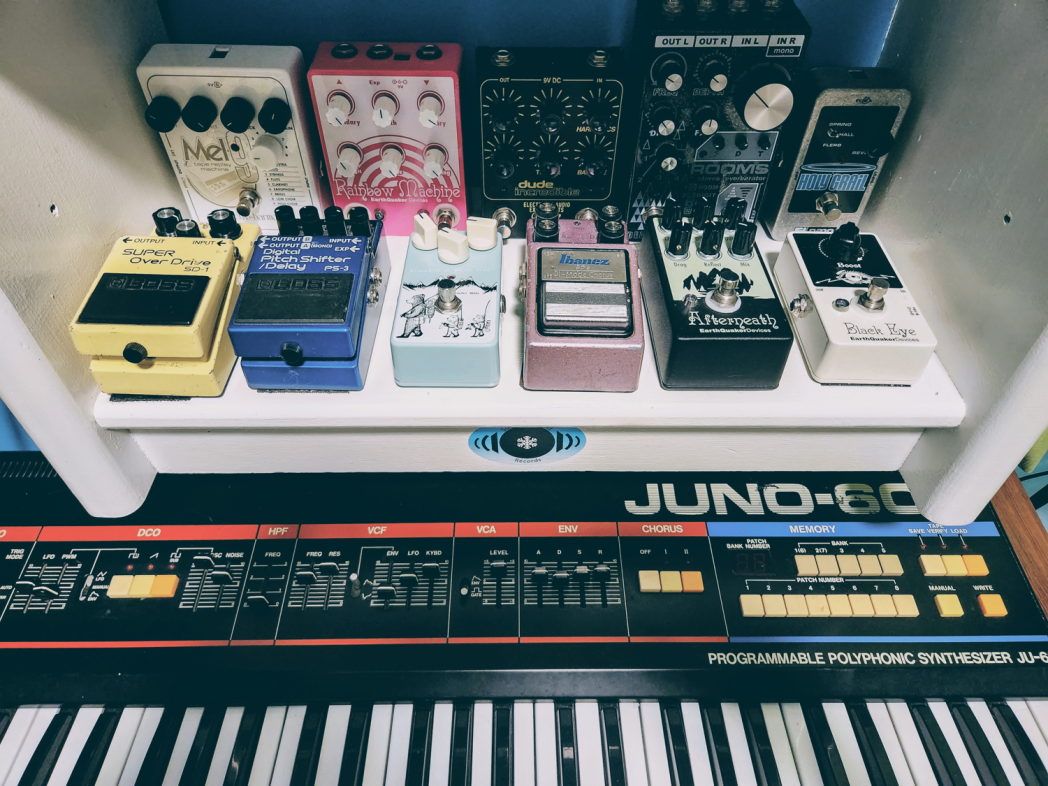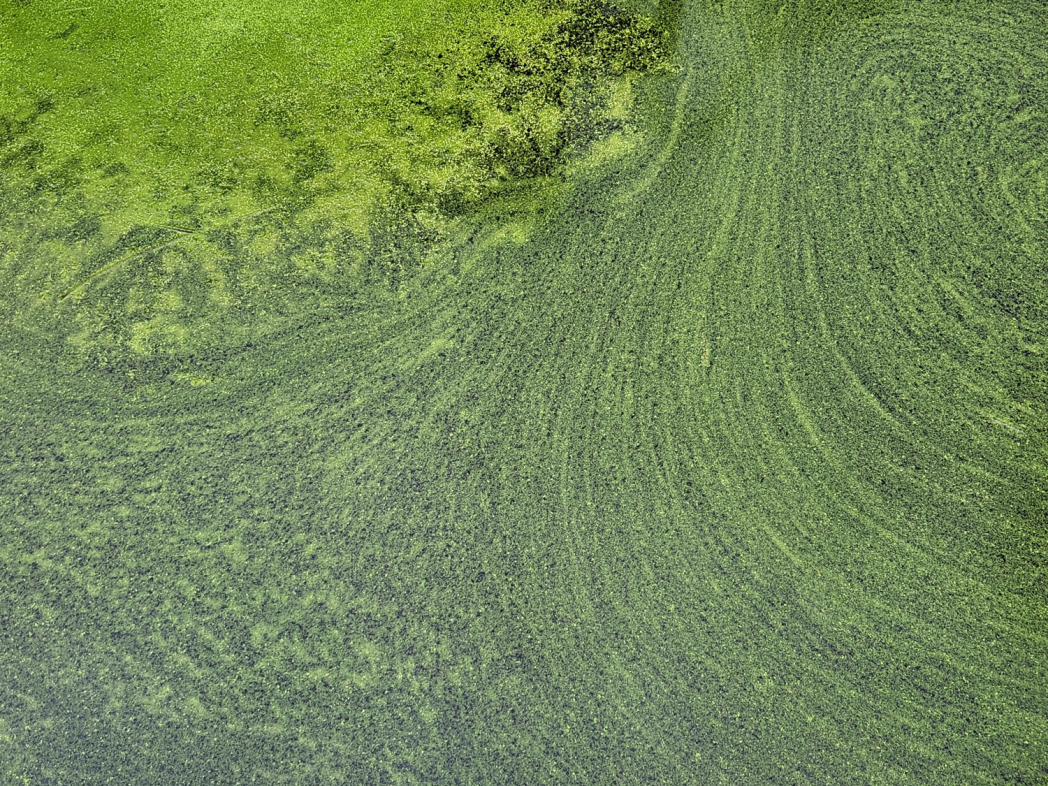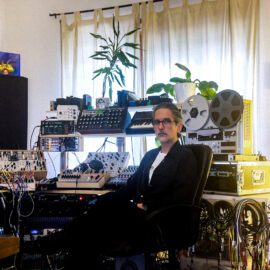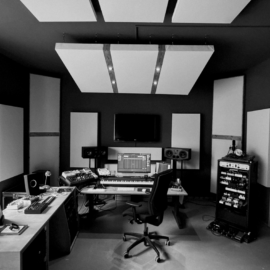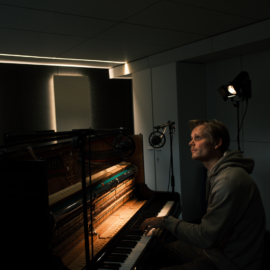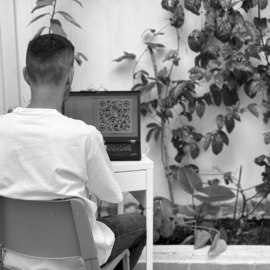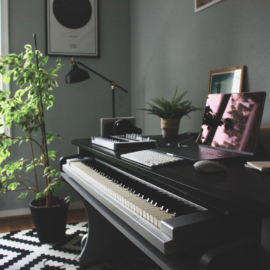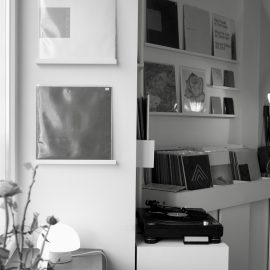Let’s start at the very beginning. Can you tell us how you got involved in composing, and what was your very first piece of gear?
From a very young age, I remember making up songs in my head, but I started writing songs more seriously as a teenager. My first piece of recording gear was a Tascam 424 PortaStudio that ended up seeing many years of use and abuse, and in a way, taught me to be economical with the recording process as well as how to manipulate magnetic tape to my advantage.
How many different studio iterations have you gone through, and what does your final setup look like right now?
Well, the basics of my Octopus Pond Studio have remained the same for a bit, but I generally have practice disassembling my setup after I have finished work on a record. I guess it is a way to reset things to keep me from repeating the same processes that I previously used and spark some fresh creativity. Right now, have a Neve Preamp, Yamaha monitor speakers, multiple aluminum guitars, an ESP bass, Roland Space Echo, my trusty Roland Juno-60, a Drumbrute, Microbrute, a Roland Jazz Chorus 120, an old Baldwin Professional amp that has incredible and unpredictable spring reverb, an old upright piano, some modular synths, and loads of effects pedals, but my favorite right now is the Death By Audio Rooms stereo reverberator.
Tell us about your favourite piece of hardware.
Aside from the creative mind,… probably my collection of random malfunctioning tape decks, which I use to add color to and mutate recordings that seem too normal. I am also very fond of the Roland Space Echo and Juno 60, my custom Dunable Cyclops with an EGC aluminum baritone neck, and a few of the strange contraptions I own from Kaiser Electrical Instruments.
And what about the software that you use for production?
I am a Cubase/Nuendo user for the most part and have been for a very long time. Part habit and part just knowing how to manipulate it into doing what I want without a lot of trial, error, and frustration. I use a few plugins here and there for sure, but I mainly like to get my effects from pedals or hardware as the signal is being recorded mainly because it sounds more organic to me, but also because I like to manually adjust the knobs and faders while the recording process is happening and take advantage of happy accidents.
Is there a particular piece of gear that you’re just dying to get your hands on, and do you think one day you’ll have it?
I am sure there are a million things I’d love to acquire and have fun with, but I am sort of having an anti-materialistic shift in my thinking due to environmental concerns. So, as long as I have something to record on, I’m happy going outside, sampling sounds, and making noise with whatever I can find. That being said, I wouldn’t pass up the chance to snag some more random old, second-hand microphones or gadgets to see what I could do with them.
Can you please share some aspects of sound design in your work?
I would say it is mostly folding layers upon layers into one another, using field recordings to open things up and add dimension, paying close attention to the colors and textures, and making sure the bottom end is vaguely menacing and undulating beneath it all.
Any particular new techniques that you tried out for your new album?
One of the main things was bringing my bass playing into the mix, especially on In the Octopus Pond and The Slow Boiling Amphibian Dreamstate, which I hadn’t done much of with Arrowounds until then. I also spent a lot more time collecting field recordings, which formed the bulk of The Honeycomb Labyrinth. I actually had serious creative tunnel vision for The Honeycomb Labyrinth, and that whole album is basically one giant project file, in that I just kept creating and adding on to previous bits as I went along until the whole piece felt finished. That made it a challenge to mix, but it also turned out to be my favorite sounding album of the series. Another thing I tried this time, as far as the short stories go, was the process of automatic writing when coming out of a meditation or trance state, basically just spilling words onto the pages as the deluge of ideas presented themselves to me. I found it to be a really interesting experiment, but it also made me question my sanity on occasion.
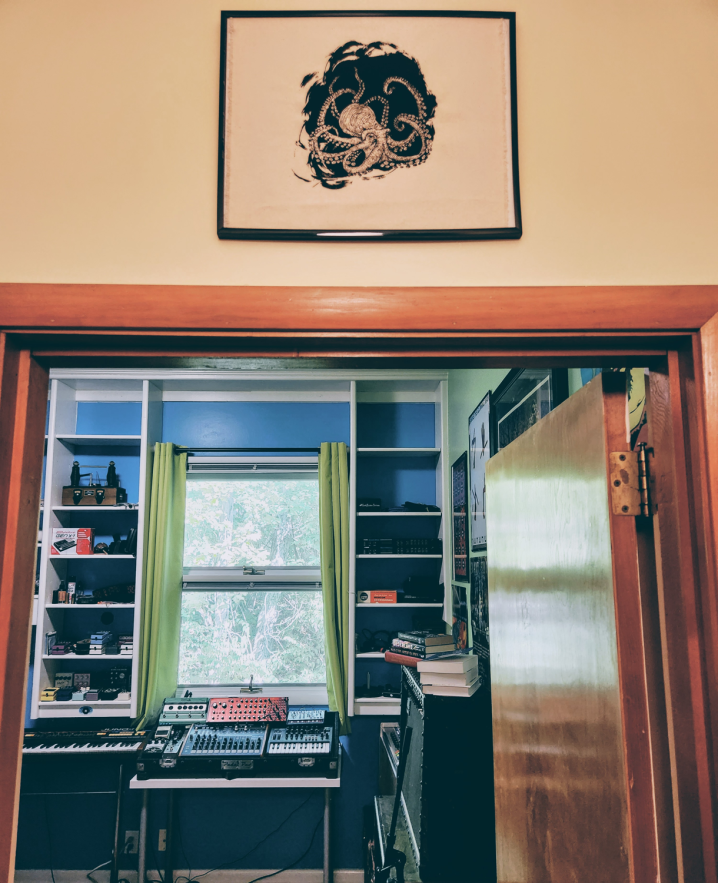
What is the most important environmental aspect of your current workspace, and what would be a particular element that you would improve on?
I would say the most important thing is that when I close the studio door, I can tune out the outside world and go to another place altogether. Depending on my mood, it would also be letting in natural light and seeing the wilderness outside my windows, but also using some creative lighting and creating a bubble can work wonders. There is a lovely enclosed wooden stairwell in my house that I use for natural reverb, and that gets used somehow in almost everything I do.
What can you tell us about your overall process of composition? How are the ideas born, where do they mature, and when do they finally see the light?
Quite a lot of the Arrowounds stuff is born from just experimenting and going wherever the sound leads, and then I use that base material to build from and let the landscapes create themselves. As far as when they finally see the light, I suppose they just let me know when they are ready… I have an endless amount of material on hard drives, and every so often, I will just dig in randomly to find bits that speak to me. Usually, once the colors feel right, the textures are working together and listening back transports me somewhere else entirely, my excitement will spring the work from its isolation.
After the piece is complete, how do you audition the results? What are your reactions to hearing your music in a different context, setting, or a sound system?
I like to play pieces back in a variety of environments: on my home stereo system, in the car, with headphones, of course, in different states of mind and at times of the day. I always share pieces with my partner, a few close friends, and Ryan Keane from Lost Tribe Sound because they have good ears, really listen, and are unflinching in their honesty, which I absolutely appreciate and treasure.
Do you ever procrastinate? If so, what do you usually find yourself doing during those times?
It’s not so much procrastination, but I definitely let ideas percolate in my head for a while sometimes. I probably have 4 or 5 albums floating around in there, waiting for their time to be released at any given moment. And if I am not working on Arrowounds stuff, I am always working on something else; be it my other projects like Acid Pool Moth Light, Elias Black, or the Unmothered album I am currently working on, for which I ended up playing bass and handling the production and mixing duties. If I am not working on music of some kind, then I usually go into a headspace of wondering what the point of anything is, so I am constantly moving and trying to steer away from that abyss.
What gets you inspired?
Contemplating the endless mysteries of our existence, connecting in a profound way with nature and the universe, dreams, visions, meditation, sharing energy with loved ones, random noises and sounds, art, music, observing the world around me, and reading loads of books. The universe and everything in it exists on or consists of different levels of vibration and frequencies, so to be able to reach into that river of energy that is constantly flowing around us and to be able to pluck out ideas is a gift and a deep well of inspiration for me. I am really just trying to create the sounds I want to hear that I don’t hear anywhere else, and hopefully, others find those threads and connect with them as well.
And finally, what are your thoughts on the state of “electronic music” today?
I am infinitely more attracted to the creations made by those who tap into some higher inner or outer force, unknown dimensions, etc, and make something truly unique and real for the rest of us to experience. There are plenty of gems out there buried amongst the dunes of products. Luckily, I enjoy being a musical archaeologist and digging around.
Headshot photo by Ariel Chamberlain
All octopus artwork by Robert Vanitvelt
All other photos by Ryan S Chamberlain
